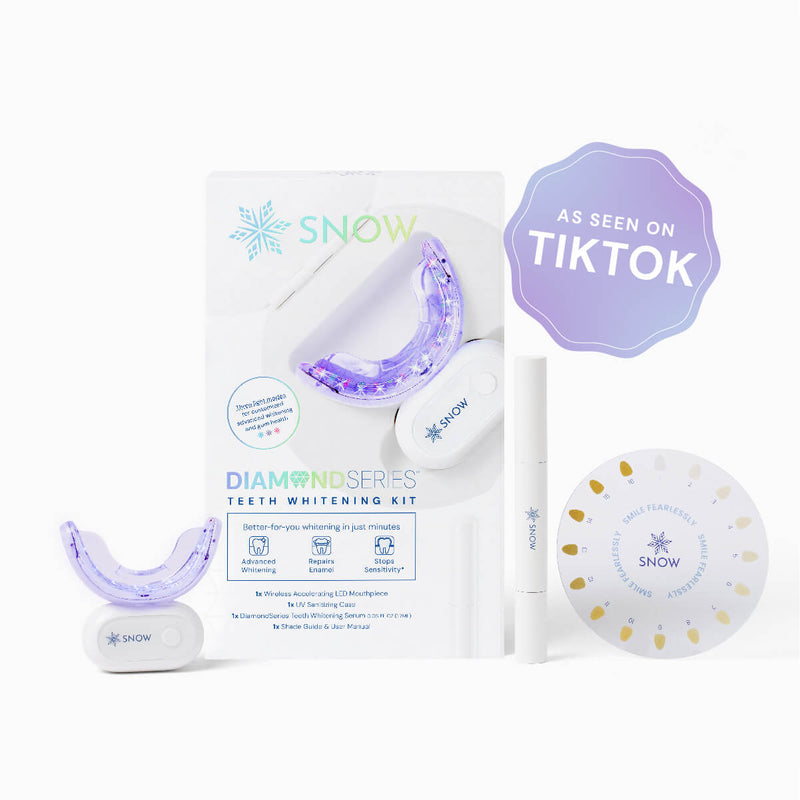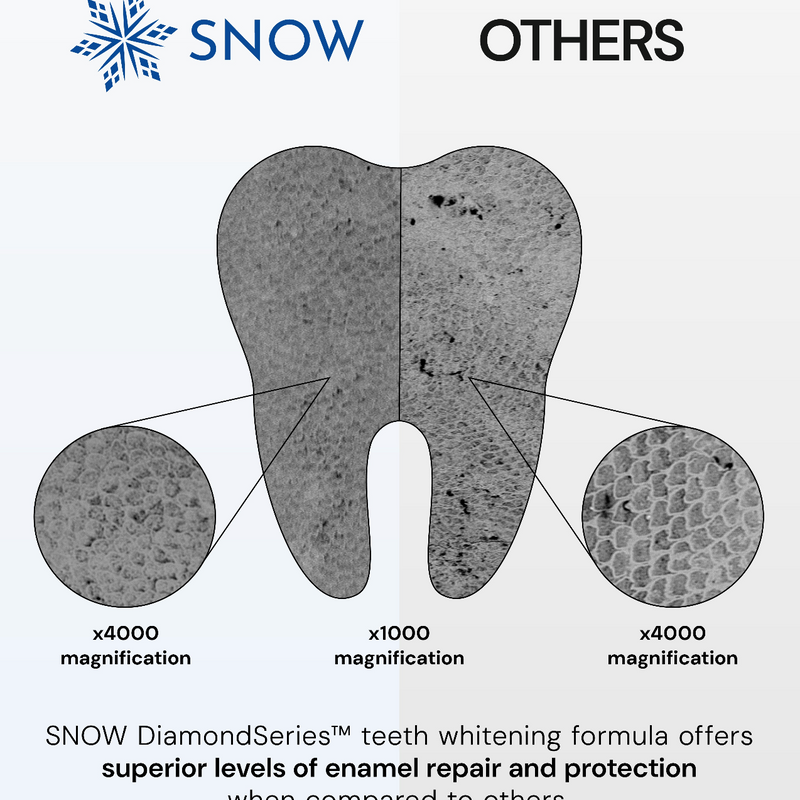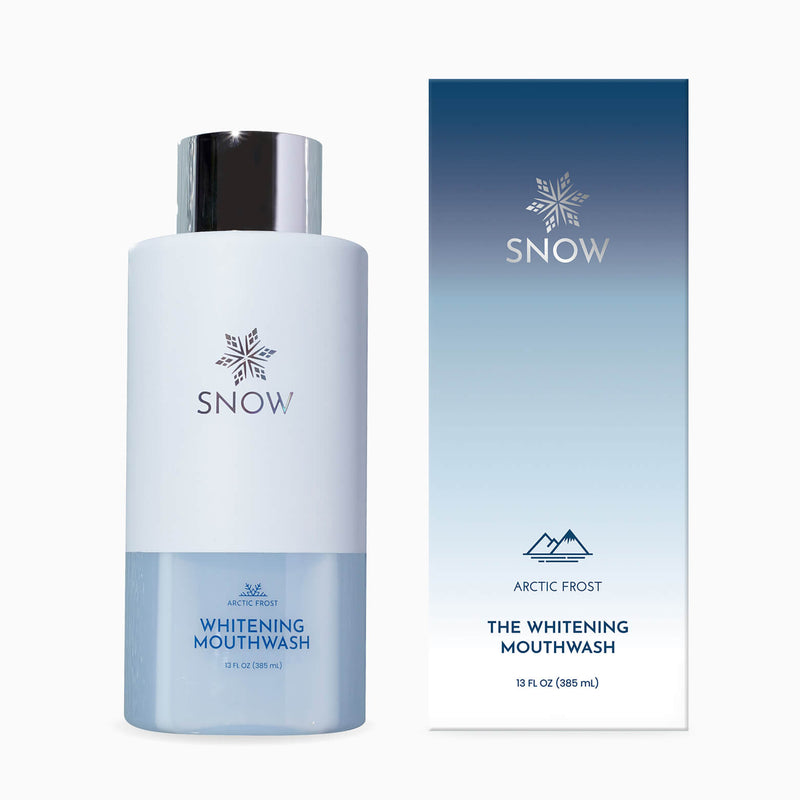Before and after water flosser: How can this device revolutionize your oral hygiene routine?
In this article, we'll outline the basics of water flossers and their many benefits. You'll learn how water flossers compare to traditional brushing, the types available, and the proper way to use them.
We'll also discuss eco-friendliness and the effectiveness of removing plaque and debris.
Let's dive into the world of water flossers and discover how they can enhance your daily oral care routine.
What this article covers:- The Basics of Water Flossers and Their Benefits
- What Is a Water Flosser?
- Do Water Flossers Remove All The Gunk?
- Types of Water Flossers and How They Can Help You
- The Difference Between Regular Brushing and Water Flossing
- How to Use a Water Flosser
The Basics of Water Flossers and Their Benefits
Water flossers are an advanced tool in oral hygiene that helps remove plaque, food particles, and bacteria from between the teeth and along the gumline using a pressurized stream of water.
The benefits of using a water flosser include improved gum health, reduced inflammation, and a lower risk of gum disease. Research shows that water flossers can reach areas that are often missed by brushing and string flossing, making them a great choice for overall oral hygiene.
This method is particularly helpful for individuals with sensitive gums, as it decreases bleeding and promotes gum tissue strength through regular use.
For a versatile and effective teeth whitening solution, consider the SNOW Water Flosser. It offers three pressure modes—Pulse, Normal, and Soft—delivering up to 1,300 pulses per minute for thorough cleaning.
The 8 oz collapsible tank ensures continuous water flow, while the antibacterial nozzle maintains hygiene. With USB-C charging and up to 70 uses per charge, it's a perfect travel buddy.
What Is a Water Flosser?
What is a water flosser? A water flosser is a device that uses water to clean between teeth. Based on our observations, water flossers are beneficial for individuals with braces, dental implants, or sensitive gums, as they provide thorough cleaning without the irritation that string floss might cause.
This tool is easy to use and can often be customized with different pressure settings and tips to suit specific dental needs. While not a complete replacement for manual flossing, it can be a valuable addition to your oral hygiene routine.
Do Water Flossers Remove All The Gunk?
Water flossers are highly effective at removing food particles, plaque, and bacteria from between teeth and under the gumline.
Studies have shown that they can be more effective at reducing plaque and improving gum health than traditional floss in hard-to-reach areas or around dental appliances.
Our findings show that the pulsating water jet not only dislodges debris but also massages the gums, promoting better circulation and reducing inflammation.
Is a water flosser better than string? While water flossers can clean deep into periodontal pockets and between teeth, they may not completely replace traditional flossing in every situation. For additional help in removing plaque and surface stains, try the SNOW Activated Charcoal Whitening Floss.
Made with activated charcoal and bamboo fibers, this floss is gentle, expands naturally, and leaves your mouth with a refreshing peppermint aftertaste.
Types of Water Flossers and How They Can Help You
Water flossers come in a variety of types. The most common is the countertop water flosser, which is typically used at home.
Another popular option is the portable or cordless water flosser, which is compact and battery-operated, offering more flexibility for travel.
Other options include shower and faucet flossers, which connect directly to your water source, eliminating the need for a motor or electricity. These are less maneuverable but convenient for those who want to floss while showering.

The Difference Between Regular Brushing and Water Flossing
Our research indicates that, while both regular brushing and water flossing are essential, they serve different purposes. Brushing cleans the surfaces of your teeth. It's the first line of defence against cavities and gum disease.
Water flossing, on the other hand, focuses on cleaning between the teeth and along the gumline. The water can reach into tight spaces where a toothbrush cannot.
For those looking to combine flossing and whitening, the SNOW Charcoal Whitening Floss Picks are perfect. They remove plaque while brightening teeth and are gentle on gums, making them ideal for on-the-go use.
How to Use a Water Flosser
Using a water flosser is simple. Start by filling the reservoir with lukewarm water and choosing the appropriate nozzle for your needs—like the classic jet tip for general use or the orthodontic tip for those with braces.
Once the flosser is ready, lean over the sink to avoid splashing, place the nozzle at a 90-degree angle to your gumline, and turn on the device. Move systematically along each tooth, pausing for a couple of seconds between teeth to ensure thorough cleaning.
It's important to start with a low-pressure setting if you are new to water flossing, gradually increasing as you become more comfortable.
After flossing, remember to empty the reservoir and clean the nozzle to prevent bacteria buildup.
Water floss before or after brushing? We recommend flossing before, as doing so gets rid of food particles, giving the brush greater access to the tooth's surface.
Conclusion
Throughout this article, we have discussed what a water flosser is, the eco-friendly aspects of its design, and the various types available.
We've also compared regular brushing to water flossing and provided practical advice on how to use this innovative tool effectively.
If you're ready to transform your oral care routine, explore SNOW's water flossers. Designed with versatility and effectiveness in mind, SNOW's products can help you achieve cleaner, healthier teeth effortlessly.
If you want to learn more, why not check out these articles below:
- Water Flosser Tips
- Best Water Flosser
- Best Dental Floss
- Best Portable Water Flosser
- Best Travel Water Flosser
- When Is the Best Time to Floss
- Why Does My Floss Smell Bad?
- Why is Flossing Important?
- Why Does Flossing Feel Good?
- Why Is Flossing As Important As Brushing?
- Do Water Flossers Work?
- Does a Water Flosser Replace Flossing?
- Does Water Flosser Remove Plaque?
- Does Water Flossing Hurt?
- Does Water Flosser Make Teeth White?

























